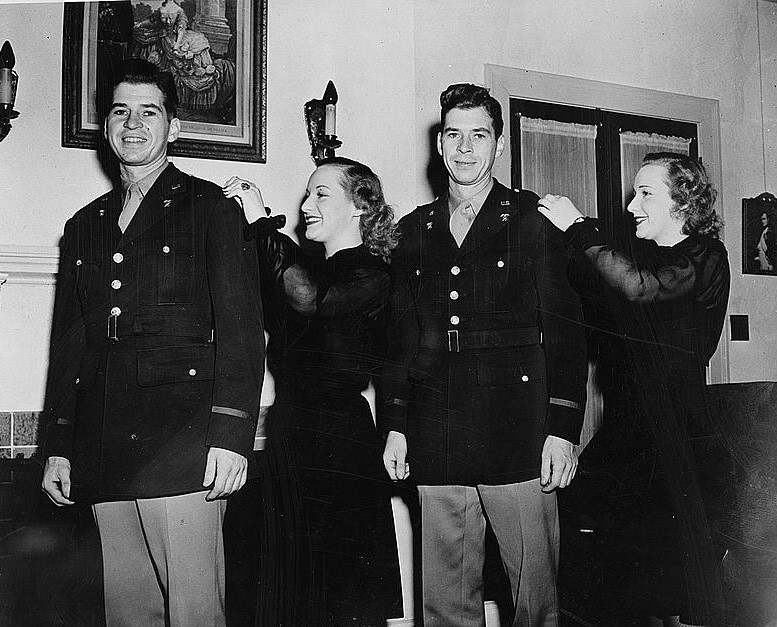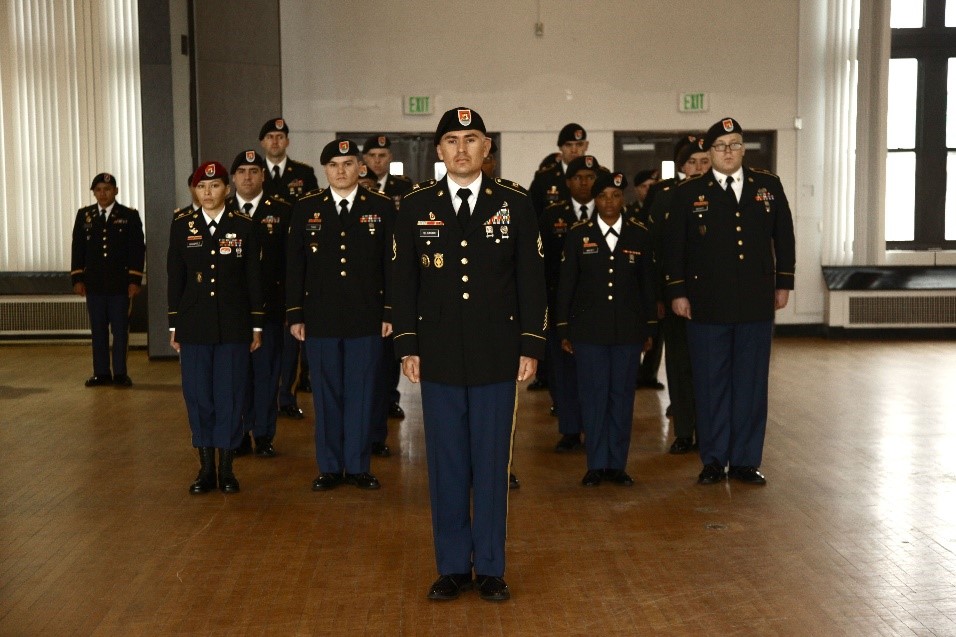Appreciation for vintage fashion seems to have hit the military too. On November 11, 2018 ― Veterans Day ― the U.S. Army announced the adoption of a new service uniform directly inspired by the World War II-era “Pinks-and-Greens.” As the official guidelines proudly proclaim: “The Army wore the iconic Greens uniform when America was in the throes of World War II. We are still that Army, and we’re reinstituting the uniform worn by the ‘Greatest Generation.’”

U.S. Army Officers wearing their “Pinks-and-Greens,” 1943. (Library of Congress)
Uniforms are soaked in symbolism, and the same guidelines point out that “the uniform is a symbol of honor and tradition, of esprit de corps and morale, and of personal excellence and pride.”
In fact, the replacement of the current service uniform with the new World War II-inspired Army Service Green Uniform (AGSU) is not dictated only by practical necessities. Rather, it reflects the need to reform the image of the U.S. Army afflicted by the legacy of lengthy and largely inglorious wars in the Middle East. As Military Times acknowledges, the past “18 years of endless wars” created unprecedented difficulties in meeting recruiting goals.

Old and New Uniforms in Comparison: Modern-day reenactors (left and center) wearing the World War II Pinks-and-Greens Class A uniforms and an active duty U.S. Army Officer wearing the newly issued Army Green Service Uniform. (Photo courtesy of Molly Sampson, 2020)
The choice of World War II among all the wars in U.S. Army’s history is not incidental: in an effort to “leave behind” a painful twenty-year-old involvement in Iraq and Afghanistan the Army has for some time been involved in an attempt at rebranding itself. With its rhetoric of making America “great again,” the political context of the Trump administration proved the perfect backdrop for the adoption of the new uniform.
The connection the U.S. Army seeks to reestablish with a more glorious past is unmistakable considering that new AGSU is almost identical to the World War II “Class A” officers’ uniform. Unlike the U.S. Navy and the U.S. Marine Corps, who have been characterized by their easily recognizable Crackerjacks and Dress Blues since the early 1900s, the Army has repeatedly changed its uniform over the past hundred years.
The WWII-era Pinks-and-Greens version originated in 1926. While enlisted men were issued a plain olive drab uniform, officers had a choice of color combination. Since most opted for “pink” (officially Olive Drab shade #54) pants and shirt and “chocolate” (Olive Drab shade #51) coat and tie for added contrast, the uniform quickly gained the nickname “Pinks-and-Greens.”
In the early postwar period, overproduction made the uniform so easily available that law enforcement, civilian workers, and even inmates began to wear it. So, in 1954, the Army Green uniform—the “pickle suit”—took its place.
In turn, the Army introduced the blue Army Service Uniform (ASU) in 2008 to replace the “pickle suit,” which came to be connected to the dark years of Vietnam and the Cold War. The ASU’s blue color―which the U.S. Army displayed from the Revolutionary War up until 1902―seemed a perfect homage to its roots, but the uniform soon became unpopular among many soldiers. The Army leadership was forced to find a replacement just three years after it was finally distributed to all soldiers in 2015.

Replacing a uniform to restore the pride of soldiers in their Army is undoubtedly a positive move, and the new AGSU looks sharp. However, it also invites a series of considerations. Though touted as the uniform that “won” World War II, the Pinks-and-Greens was the uniform of officers only and never made it to the end of the war. Starting in mid-1944, the four-pocket coat was largely replaced by the British-inspired short-cut “Ike jacket.”
More disturbing than historical inaccuracies, however, are its symbolic implications. In Army history, new uniforms have customarily been characterized by forward-looking designs, concepts, and values systems. In contrast, the adoption of a uniform from 75 years ago suggests an Army struggling to look ahead.
The adoption of the WWII-inspired AGSU is no mere nostalgia; rather, it represents an uneasiness about the recent past. For these reasons, the Army skipped entirely over the era of the “pickle suit” (1954-2015) to go back to the 1940s. The “pickle suit” tenure during the post-Vietnam era and early War on Terror disqualified it.

The choice of the Pinks-and-Greens is a signal that the Army rejects its past after Vietnam and, in particular, the recent 20 years of war in Iraq and Afghanistan, despite claims of success and military prowess.
